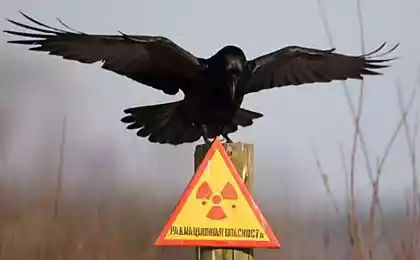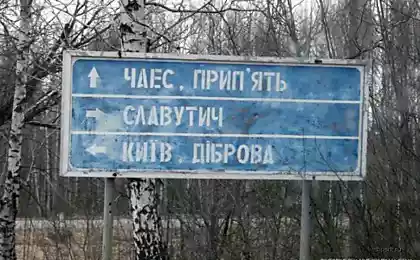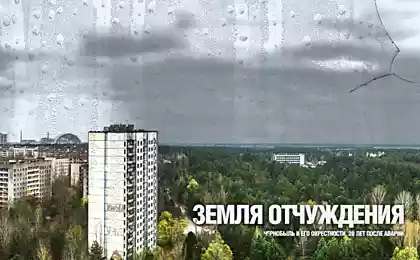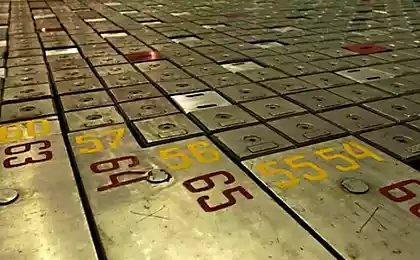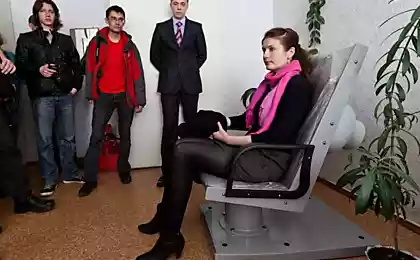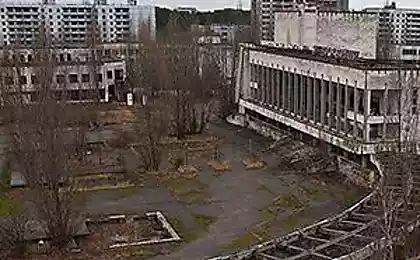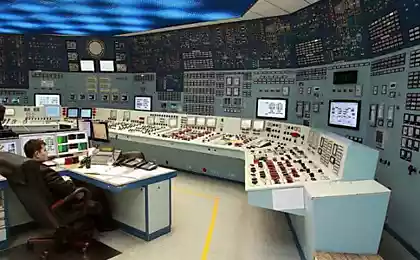2572
Smolensk NPP
Smolensk NPP - Nuclear Power Station, located 3 km from the city of Desnogorsk Smolensk region. Smolensk NPP - the largest energy company and the north-western region of the country's unified energy system capacity of 3000 MW. In the period from 1982 to 1990 at Smolensk NPP were put into operation three power reactors RMBK-1000 improved design with a range of advanced systems that ensure the safe operation of nuclear power plants. At Smolensk NPP operates three power units with RBMK-1000. The project envisages construction of two queues, two blocks from the common support structures and systems in each, but in connection with the termination in 1986 (due to the Chernobyl accident) construction of the fourth unit of the second turn left unfinished.

In Desnogorsk we arrived by bus early in the morning. Part of the group went to photograph the city, the other to fill up on the couch. Immediately after a brief press conference, we went to the plant. Since photography is all very strictly. You can only shoot from certain points under the supervision of security power.

Desnogorsk. What do you say this name? For the average citizen word sounds as bright as Opochka, Vyhino or Bologoe - another town in the vast expanses of our vast country. Residents are aware of the Smolensk region (noblesse oblige), which is located near the city of Smolensk Nuclear Power Plant. But once you utter the word "Desnogorsk" in the company of fishermen and you will hear a chorus of approval, emotional cheers and cries of joy. Fisherman Desnogorsk, for Everest climber - a place where he flies in dreams. Another would be. Near the town is a pond with an area of 44 square kilometers, where the water never freezes - a reservoir of Smolensk. The station provides year-round warm pond. Pond teeming with fish. Bream, carp, pike, white and bighead carp, black and white carp, carp, catfish, tilapia and even African freshwater prawn - not a complete list of the inhabitants of the reservoir Smolensk.
RBMK-1000 single-circuit type. This means that the steam turbine is generated directly from the cooling water of the reactor. The structure of each unit consists of one reactor with a capacity of 3200 MW (t) and two turbo-generators with a capacity of 500 MW (e) each. Turbine generators are installed in general for all three blocks turbine hall of a length of about 600 m, each reactor is located in a separate building. The station operates only in basic mode, its load is not dependent on the changing needs of the power system.
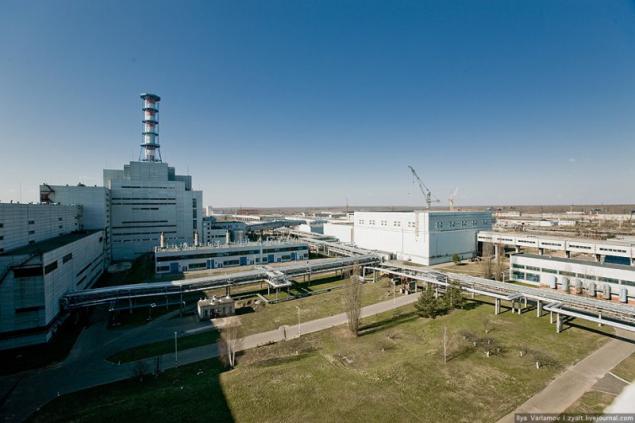
In Russia today employs 10 nuclear power plants. They are light, warmth and joy in the house. Do you think that each nuclear power plant takes on 1/10 of this positive work? Mistaken. Each station is strong in its own way, for example, Smolensk NPP generates 1/7 of all "nuclear electricity" Russia annually giving to the grid of the country, on average, 20 billion. Kilowatt hours of electricity.
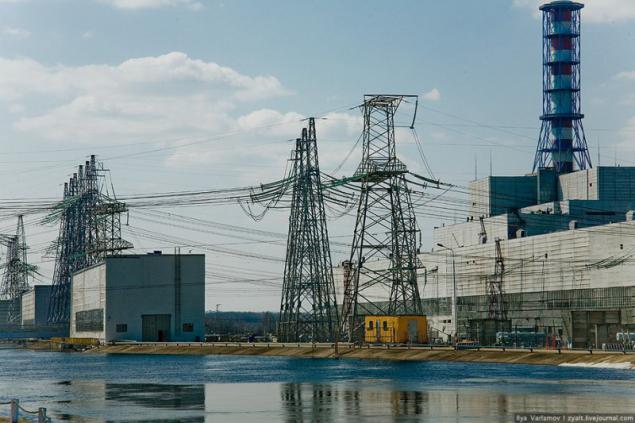
Know that science fiction writers occupy only the second place in the ranking of "People with the most nightmarish fantasy". Who in the first place? Specialists who design security systems for nuclear power plants. They are required to not only create a situation which simply can not be, but also to develop a protection from it. During the construction of these professionals SNPP fantasy played out in earnest.
All stations are equipped with power units localization system crashes, eliminates the emission of radioactive substances into the environment even in the most severe accidents associated with the full pipeline ruptures reactor cooling circuit. All equipment cooling circuit is placed in sealed boxes of concrete that can withstand pressures of up to 4, 5 kg per square centimeter. That's a lot or a little? Judge for yourself. Excess pressure generated by the shock wave of an atomic explosion in the zone of complete destruction (zone closest to the epicenter of the atomic bomb) is almost 10 times less (0, 5 kg / cm).
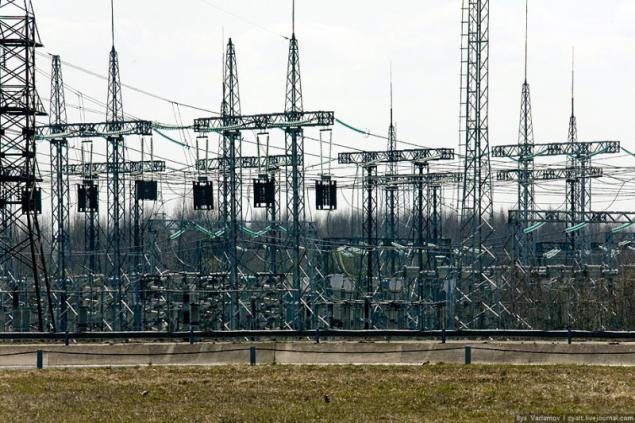
Did you know that around Smolensk invisible compass built circle with a radius of 30 kilometers. Everything inside it, called the Zone of observation. In this area you will not find men in civilian clothes, there are no humanoid robots and superspetsnazovtsev. Observation area it is called because it closely examines the air, water and soil for changes in background radiation. Automatic sensors show that the background corresponds norm.
And in the surveillance zone employees Smolensk restored and landscaped 11 springs, enjoying the glory of the holy sources.
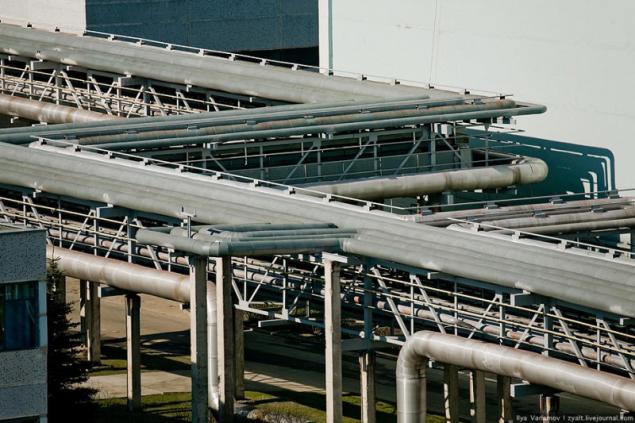
To get to the station is not so simple. At the beginning of the employee applying a magnetic pass to a special reader. Next comes the compartment where must enter a password and remove handprints, also is weighted (allowable discrepancy is not more than 10 kg) and a reconciliation of photos. Only after all these procedures, the employee is in the locker room or on physical examination.
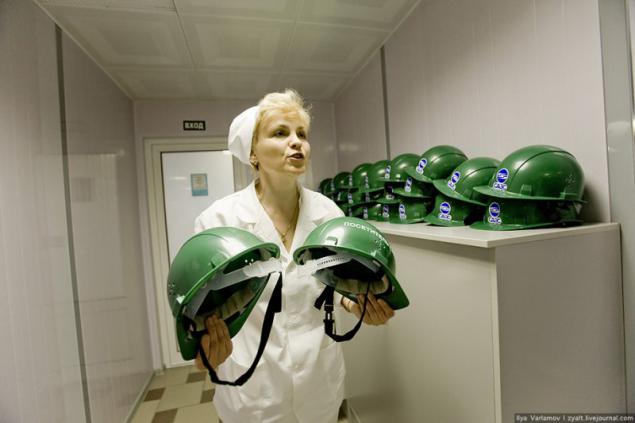
All given special socks, shoes, gowns, caps, gloves, helmets and birushi.
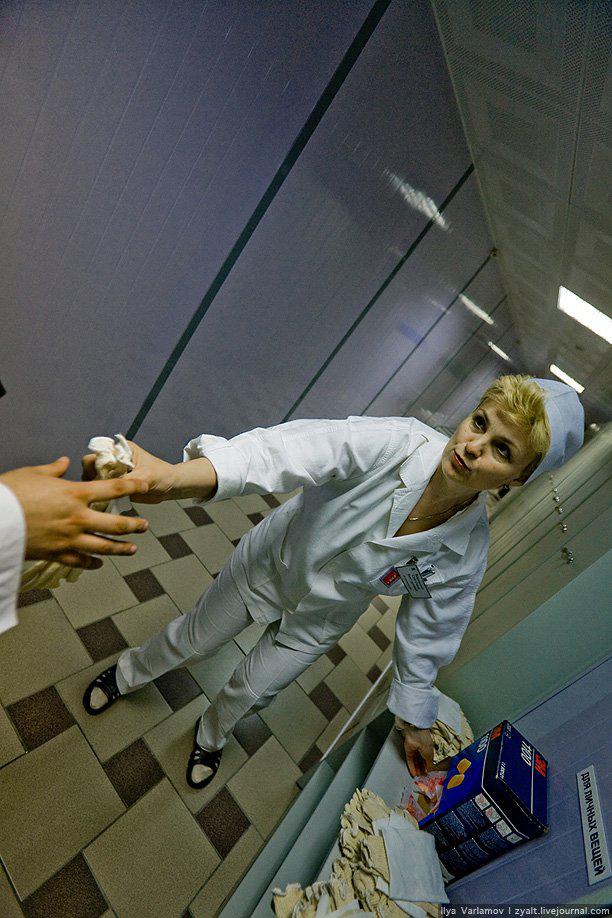
At the output of employees are 2 levels of radiation control.
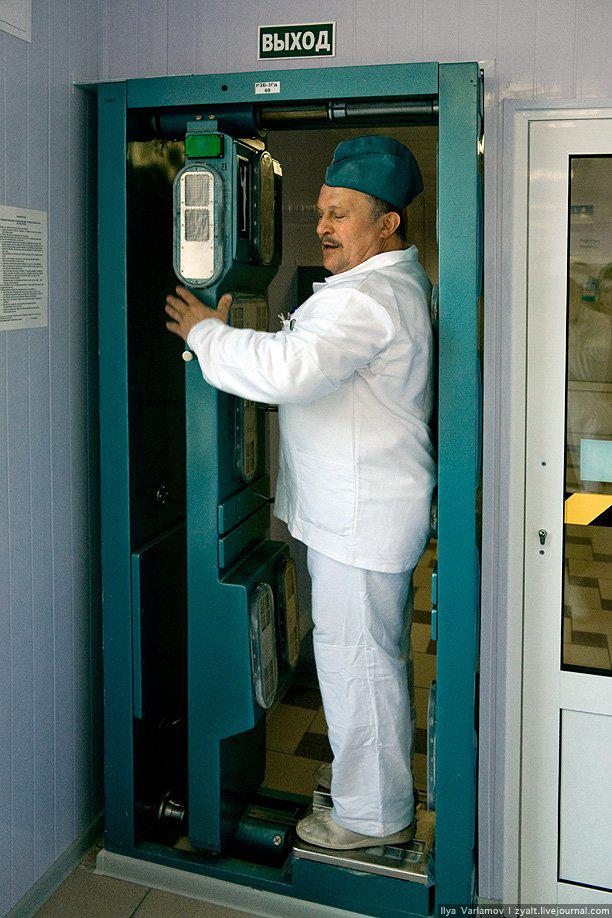
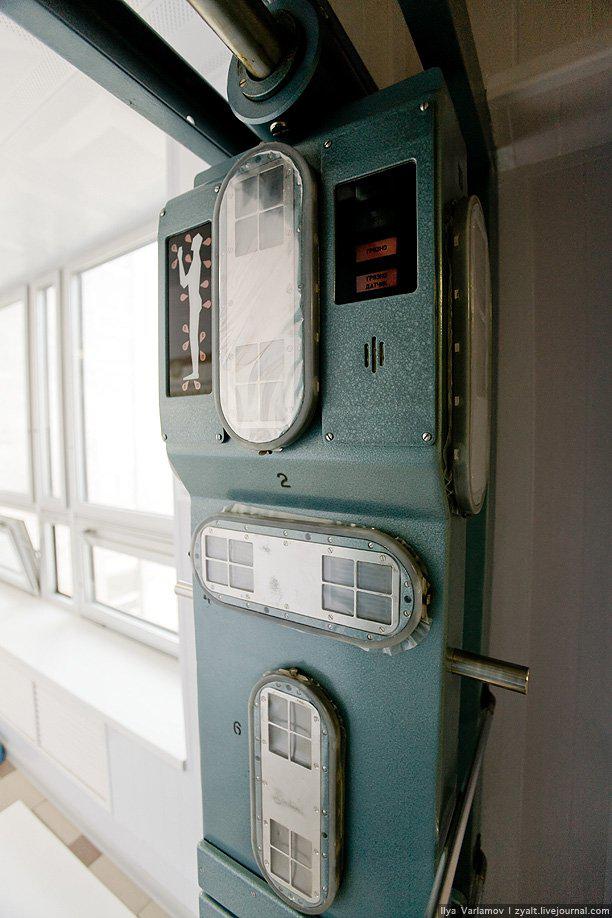
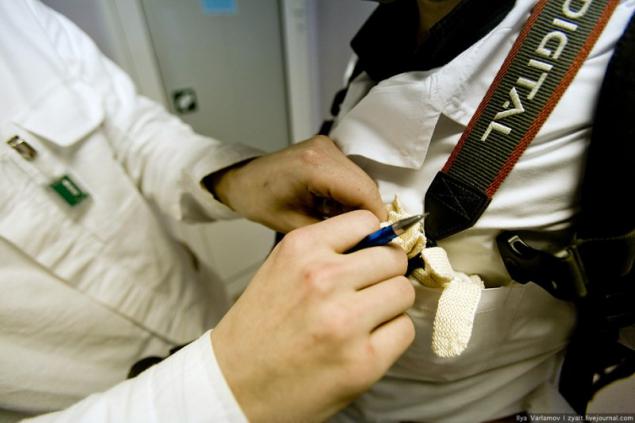
Chest hang a special radiation sensor.
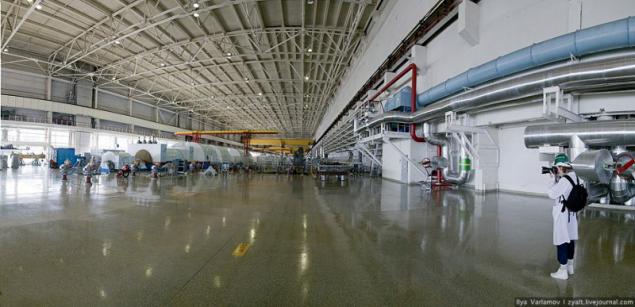
Computer room. At Smolensk NPP power units installed turbine K-500 65-3000 generators TIA-500 500 MW. All cylinders turbine rotors and generator are combined into a single shaft. Rotational speed vala- 3000 min -1. The total length of the turbogenerator - 39m, its mass-1200T, the total mass of the rotors - about 200t.
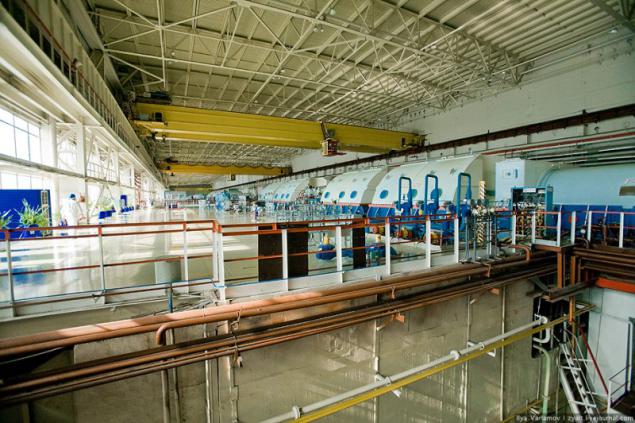
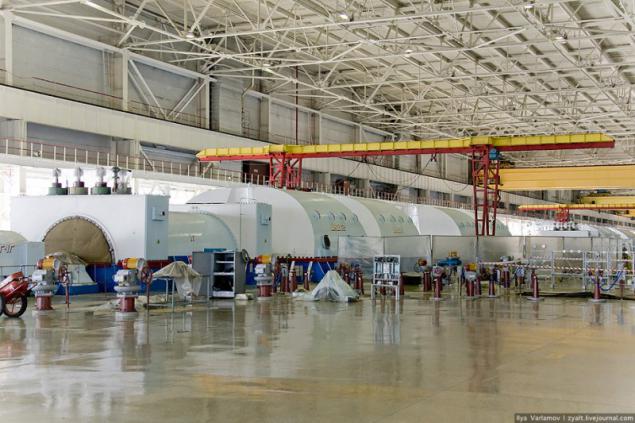
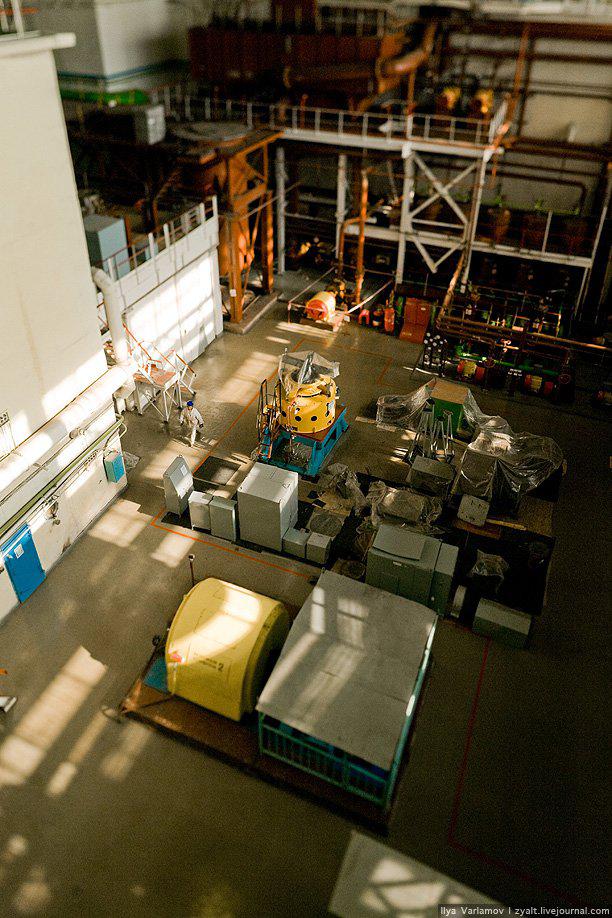


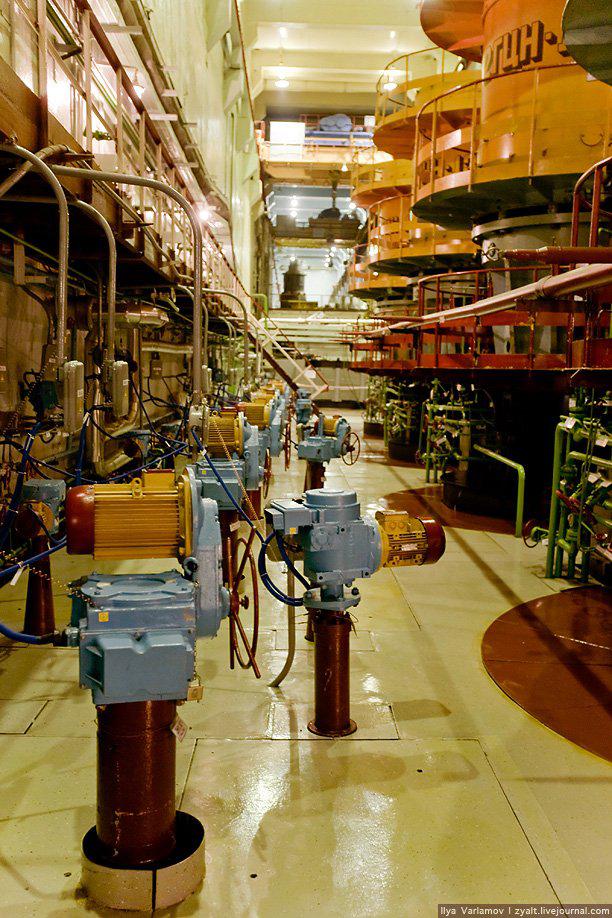
Main circulation pumps are designed to circulate the coolant in the primary circuit of NPP. Supervise the work of MCP conducted remotely control room plant. The pump housing is connected by welding to the main circulation loop reactor plant. The housing has 3 pins for connection locks with vertical and horizontal setting tools that are used for perception of seismic loads.
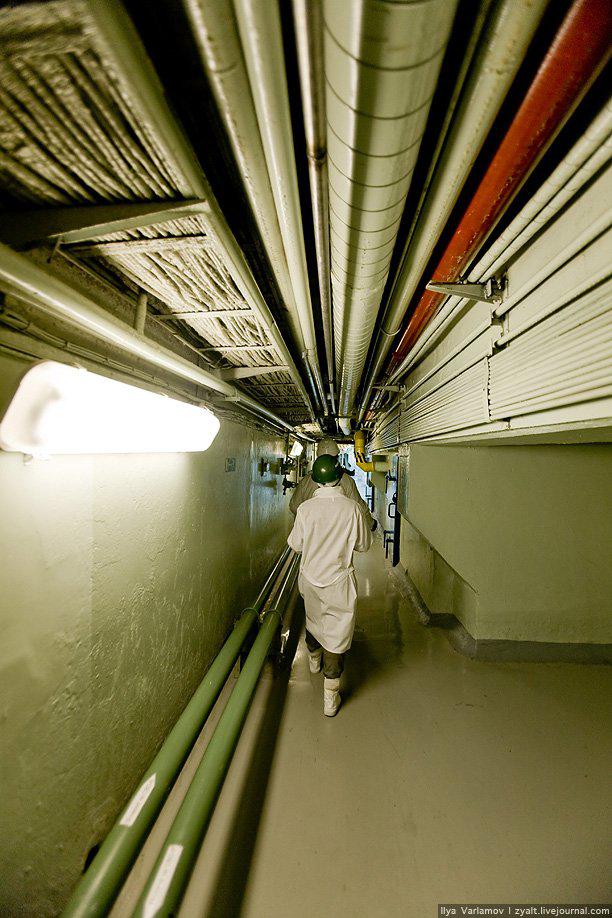

Central reactor hall. The reactor was placed in a concrete pit sizes 21, 6h21, 6h25, 5 m. The mass of the reactor is transferred to the concrete through the metal, which serve both radiation protection and together with the housing of the reactor to form a sealed cavity - the reactor space. Inside the reactor space is a cylindrical graphite stack 14 with a diameter and a height of 8 m, consisting of blocks assembled in columns 250h250h500 mm dimensions with vertical holes for the center channel. To prevent oxidation of graphite and improve transfer to the topic of graphite reactor coolant space is filled with nitrogen-helium mixture.
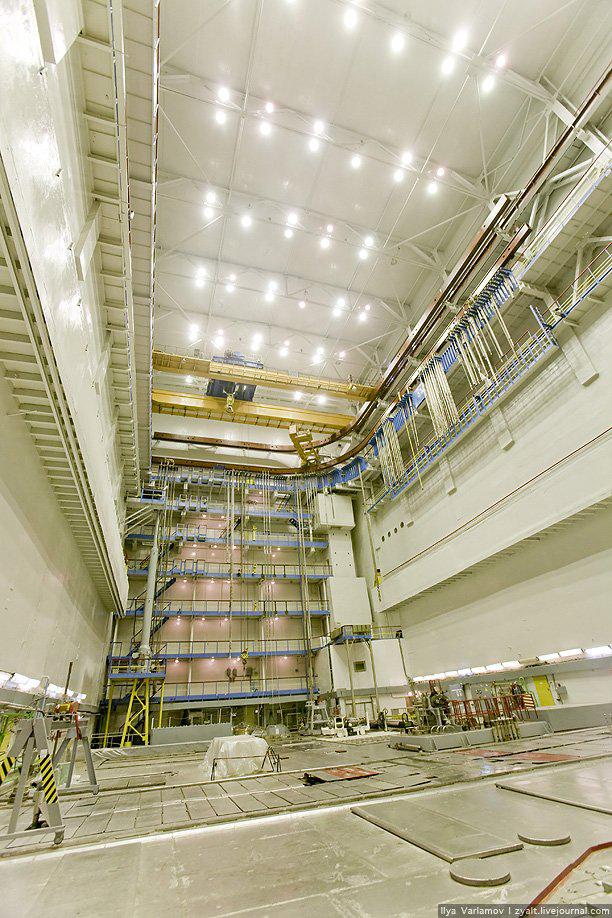
The fuel used in RBMK uranium dioxide U235. In natural uranium contains 0, 8% of the isotope U235. To reduce the size of the reactor content in the fuel pre-U235 to 2 or 2 to 4% of processing enterprises.
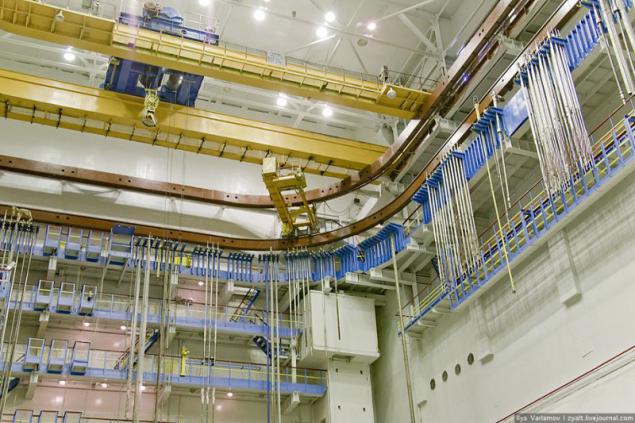
Fuel element (FE) is a zirconium tube 3 height 5 m and a thickness of 0 mm to 9 enclosed in it 88 mm, a wall thickness of 4 mm and a reactor control is performed uniformly distributed through the reactor 211 rods containing neutron absorbing water is supplied to the channels bottom, washes with fuel rods of fuel assemblies installed in the fuel channel. Number of fuel channels in the reactor - 1661.

Vertical green tube (18 rods with a diameter of 15 mm) this is a tablet with the fuel.
Water is supplied to the channel bottom, washes with rods and hot, with a portion being thus converted into steam. The resulting steam-water mixture is withdrawn from the top of the channel. For flow control and heated, with part of its technological channels, designed for installation with the fuel is converted into steam. The resulting steam-water mixture is withdrawn from the top of the channel. To regulate the flow of water at the entrance of each channel are provided shut-off control valves.
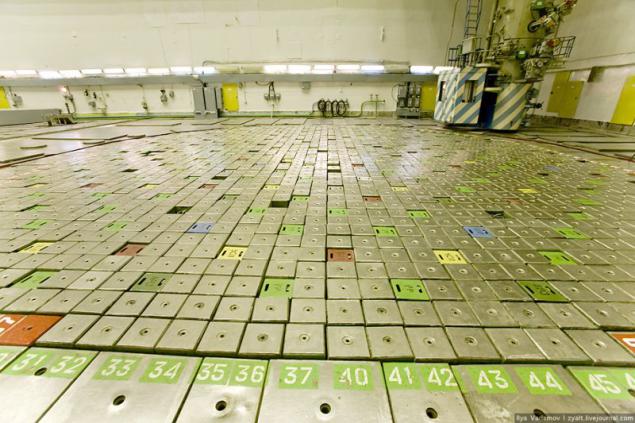
RBMK reactors advantage before the vessel type, the replacement of spent fuel assemblies, which requires shutdown of the reactor, is the ability to overload cassettes during reactor operation at nominal power.
Overload produced unloading-loading machine (REM), which is controlled remotely. Machine hermetically joined to the top part of the production channel, the pressure therein becomes equal to the pressure in the channel, then the spent fuel cartridge is removed and replaced with a fresh set. REM design provides reliable biological protection against radiation, transhipment radiation situation in the central hall is almost unchanged.
During reactor operation at rated power per day loading one or two fresh fuel cartridge. The spent fuel is placed first in special storage pools located in the central hall, and then, as they fill, will be transported to a separate storage facility for spent nuclear fuel. Closed-loop heat removal from the reactor is called multiple forced circulation circuit (MCC). It consists of two independent loops, each half of which cools the reactor.

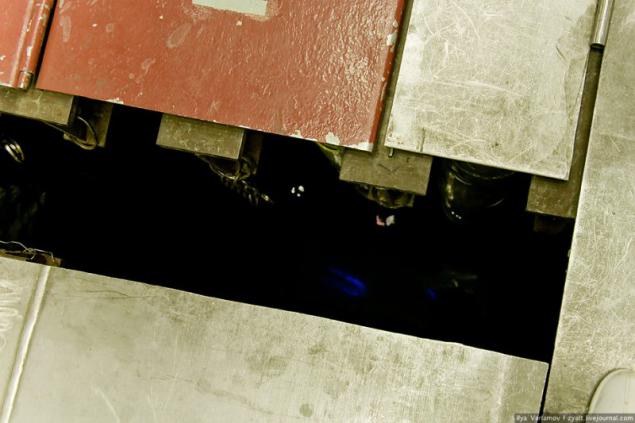
2-meter depth can be seen blue glow. This Cerenkov effect - the glow caused by a transparent medium of charged particles that moves at a speed exceeding the phase velocity of light in that medium. Cherenkov radiation is widely used in high energy physics for the registration of relativistic particles and determine their velocities.
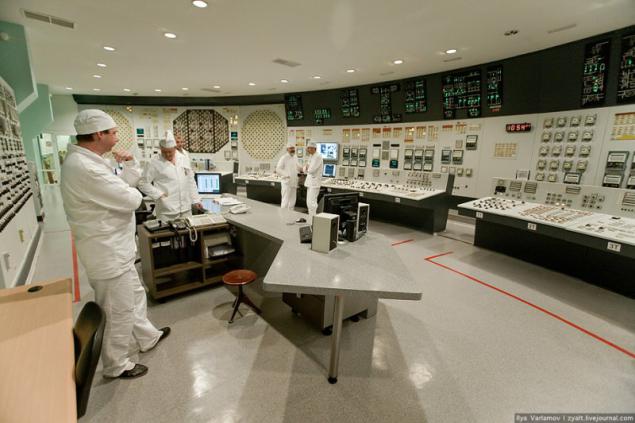
Block control panel. Then I listened to, so only the pictures.






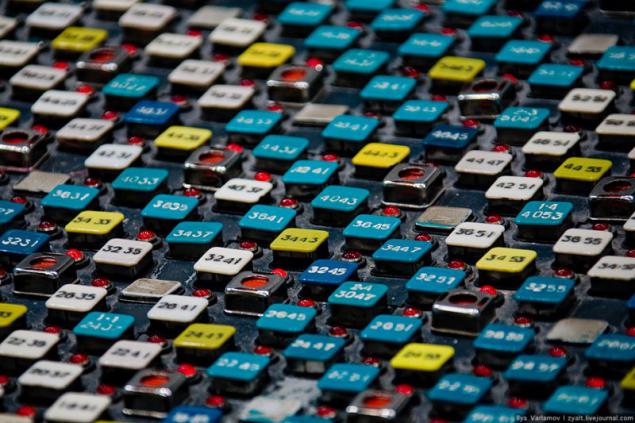
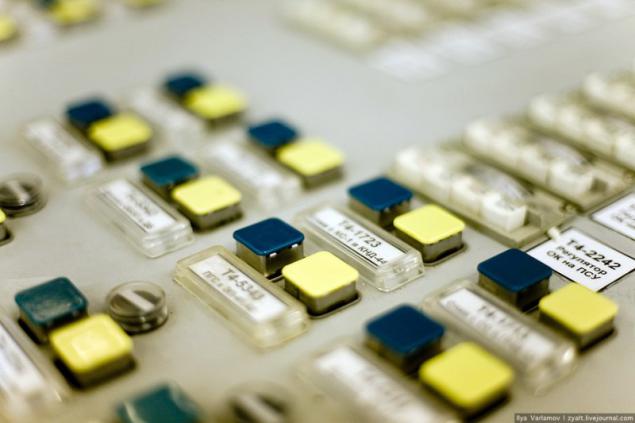
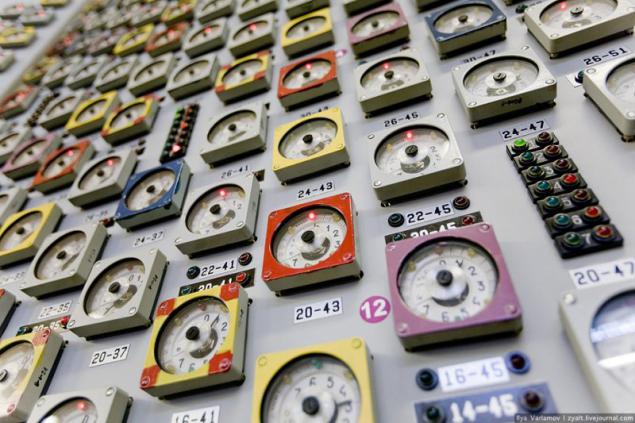
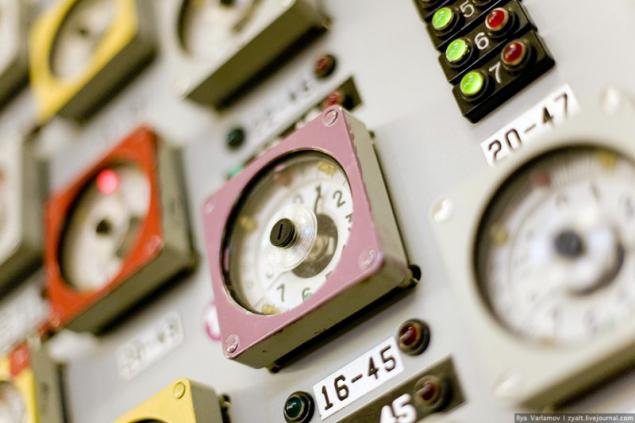
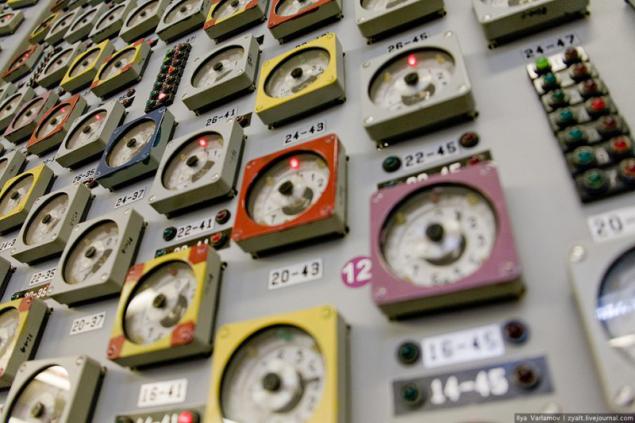




In Desnogorsk we arrived by bus early in the morning. Part of the group went to photograph the city, the other to fill up on the couch. Immediately after a brief press conference, we went to the plant. Since photography is all very strictly. You can only shoot from certain points under the supervision of security power.

Desnogorsk. What do you say this name? For the average citizen word sounds as bright as Opochka, Vyhino or Bologoe - another town in the vast expanses of our vast country. Residents are aware of the Smolensk region (noblesse oblige), which is located near the city of Smolensk Nuclear Power Plant. But once you utter the word "Desnogorsk" in the company of fishermen and you will hear a chorus of approval, emotional cheers and cries of joy. Fisherman Desnogorsk, for Everest climber - a place where he flies in dreams. Another would be. Near the town is a pond with an area of 44 square kilometers, where the water never freezes - a reservoir of Smolensk. The station provides year-round warm pond. Pond teeming with fish. Bream, carp, pike, white and bighead carp, black and white carp, carp, catfish, tilapia and even African freshwater prawn - not a complete list of the inhabitants of the reservoir Smolensk.
RBMK-1000 single-circuit type. This means that the steam turbine is generated directly from the cooling water of the reactor. The structure of each unit consists of one reactor with a capacity of 3200 MW (t) and two turbo-generators with a capacity of 500 MW (e) each. Turbine generators are installed in general for all three blocks turbine hall of a length of about 600 m, each reactor is located in a separate building. The station operates only in basic mode, its load is not dependent on the changing needs of the power system.

In Russia today employs 10 nuclear power plants. They are light, warmth and joy in the house. Do you think that each nuclear power plant takes on 1/10 of this positive work? Mistaken. Each station is strong in its own way, for example, Smolensk NPP generates 1/7 of all "nuclear electricity" Russia annually giving to the grid of the country, on average, 20 billion. Kilowatt hours of electricity.

Know that science fiction writers occupy only the second place in the ranking of "People with the most nightmarish fantasy". Who in the first place? Specialists who design security systems for nuclear power plants. They are required to not only create a situation which simply can not be, but also to develop a protection from it. During the construction of these professionals SNPP fantasy played out in earnest.
All stations are equipped with power units localization system crashes, eliminates the emission of radioactive substances into the environment even in the most severe accidents associated with the full pipeline ruptures reactor cooling circuit. All equipment cooling circuit is placed in sealed boxes of concrete that can withstand pressures of up to 4, 5 kg per square centimeter. That's a lot or a little? Judge for yourself. Excess pressure generated by the shock wave of an atomic explosion in the zone of complete destruction (zone closest to the epicenter of the atomic bomb) is almost 10 times less (0, 5 kg / cm).

Did you know that around Smolensk invisible compass built circle with a radius of 30 kilometers. Everything inside it, called the Zone of observation. In this area you will not find men in civilian clothes, there are no humanoid robots and superspetsnazovtsev. Observation area it is called because it closely examines the air, water and soil for changes in background radiation. Automatic sensors show that the background corresponds norm.
And in the surveillance zone employees Smolensk restored and landscaped 11 springs, enjoying the glory of the holy sources.

To get to the station is not so simple. At the beginning of the employee applying a magnetic pass to a special reader. Next comes the compartment where must enter a password and remove handprints, also is weighted (allowable discrepancy is not more than 10 kg) and a reconciliation of photos. Only after all these procedures, the employee is in the locker room or on physical examination.

All given special socks, shoes, gowns, caps, gloves, helmets and birushi.

At the output of employees are 2 levels of radiation control.



Chest hang a special radiation sensor.

Computer room. At Smolensk NPP power units installed turbine K-500 65-3000 generators TIA-500 500 MW. All cylinders turbine rotors and generator are combined into a single shaft. Rotational speed vala- 3000 min -1. The total length of the turbogenerator - 39m, its mass-1200T, the total mass of the rotors - about 200t.






Main circulation pumps are designed to circulate the coolant in the primary circuit of NPP. Supervise the work of MCP conducted remotely control room plant. The pump housing is connected by welding to the main circulation loop reactor plant. The housing has 3 pins for connection locks with vertical and horizontal setting tools that are used for perception of seismic loads.


Central reactor hall. The reactor was placed in a concrete pit sizes 21, 6h21, 6h25, 5 m. The mass of the reactor is transferred to the concrete through the metal, which serve both radiation protection and together with the housing of the reactor to form a sealed cavity - the reactor space. Inside the reactor space is a cylindrical graphite stack 14 with a diameter and a height of 8 m, consisting of blocks assembled in columns 250h250h500 mm dimensions with vertical holes for the center channel. To prevent oxidation of graphite and improve transfer to the topic of graphite reactor coolant space is filled with nitrogen-helium mixture.

The fuel used in RBMK uranium dioxide U235. In natural uranium contains 0, 8% of the isotope U235. To reduce the size of the reactor content in the fuel pre-U235 to 2 or 2 to 4% of processing enterprises.

Fuel element (FE) is a zirconium tube 3 height 5 m and a thickness of 0 mm to 9 enclosed in it 88 mm, a wall thickness of 4 mm and a reactor control is performed uniformly distributed through the reactor 211 rods containing neutron absorbing water is supplied to the channels bottom, washes with fuel rods of fuel assemblies installed in the fuel channel. Number of fuel channels in the reactor - 1661.

Vertical green tube (18 rods with a diameter of 15 mm) this is a tablet with the fuel.
Water is supplied to the channel bottom, washes with rods and hot, with a portion being thus converted into steam. The resulting steam-water mixture is withdrawn from the top of the channel. For flow control and heated, with part of its technological channels, designed for installation with the fuel is converted into steam. The resulting steam-water mixture is withdrawn from the top of the channel. To regulate the flow of water at the entrance of each channel are provided shut-off control valves.

RBMK reactors advantage before the vessel type, the replacement of spent fuel assemblies, which requires shutdown of the reactor, is the ability to overload cassettes during reactor operation at nominal power.
Overload produced unloading-loading machine (REM), which is controlled remotely. Machine hermetically joined to the top part of the production channel, the pressure therein becomes equal to the pressure in the channel, then the spent fuel cartridge is removed and replaced with a fresh set. REM design provides reliable biological protection against radiation, transhipment radiation situation in the central hall is almost unchanged.
During reactor operation at rated power per day loading one or two fresh fuel cartridge. The spent fuel is placed first in special storage pools located in the central hall, and then, as they fill, will be transported to a separate storage facility for spent nuclear fuel. Closed-loop heat removal from the reactor is called multiple forced circulation circuit (MCC). It consists of two independent loops, each half of which cools the reactor.


2-meter depth can be seen blue glow. This Cerenkov effect - the glow caused by a transparent medium of charged particles that moves at a speed exceeding the phase velocity of light in that medium. Cherenkov radiation is widely used in high energy physics for the registration of relativistic particles and determine their velocities.

Block control panel. Then I listened to, so only the pictures.















